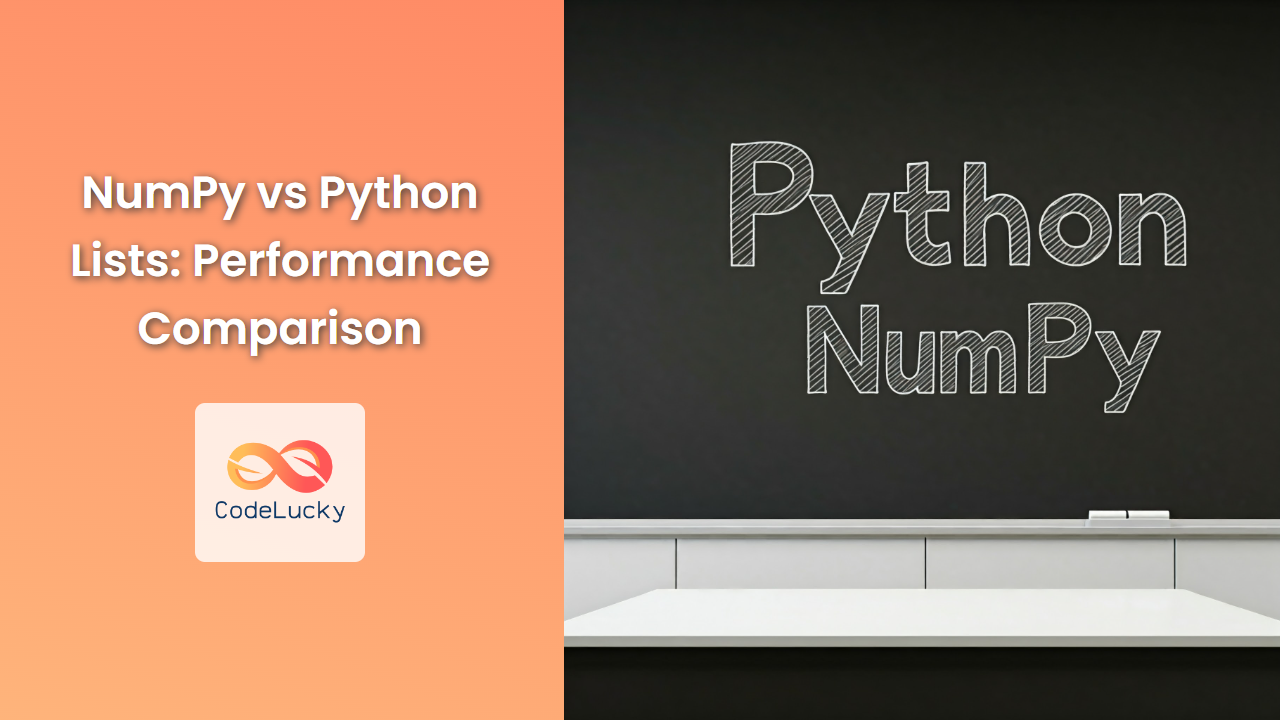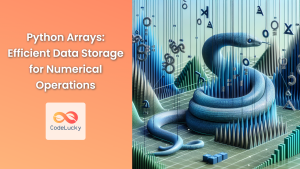NumPy and Python lists are both fundamental data structures in Python, but they cater to different needs and excel in different areas. While Python lists are versatile and can store various data types, NumPy arrays are specifically designed for efficient numerical computations and array manipulations. This article delves into the performance differences between NumPy arrays and Python lists, showcasing why NumPy often reigns supreme in scientific computing and data analysis.
The Need for Speed: Why NumPy Outperforms Python Lists
Python lists, being general-purpose containers, can hold objects of different data types. This flexibility comes at a cost—performance. NumPy arrays, on the other hand, are homogeneous, meaning they store elements of the same data type, primarily numerical. This homogeneity allows NumPy to optimize memory management and perform operations on entire arrays at once, leveraging efficient underlying C code.
Let's illustrate the performance difference with a simple example: adding two lists vs. adding two NumPy arrays.
Adding Two Lists
import time
# Creating two lists
list1 = list(range(1000000))
list2 = list(range(1000000))
# Measuring the time taken to add the lists
start_time = time.time()
list3 = [x + y for x, y in zip(list1, list2)]
end_time = time.time()
print(f"Time taken to add two lists: {end_time - start_time:.6f} seconds")
Time taken to add two lists: 0.064434 seconds
Adding Two NumPy Arrays
import numpy as np
import time
# Creating two NumPy arrays
array1 = np.arange(1000000)
array2 = np.arange(1000000)
# Measuring the time taken to add the arrays
start_time = time.time()
array3 = array1 + array2
end_time = time.time()
print(f"Time taken to add two NumPy arrays: {end_time - start_time:.6f} seconds")
Time taken to add two NumPy arrays: 0.000856 seconds
The output clearly shows that adding two NumPy arrays is significantly faster than adding two Python lists. This speed difference becomes more pronounced with larger datasets and more complex operations.
Vectorization: NumPy's Advantage
NumPy's efficiency stems from its vectorized operations. Vectorization allows NumPy to perform operations on entire arrays element-wise without explicit loops. This eliminates Python's loop overhead, leading to substantial speedups.
Beyond Addition: NumPy's Arsenal of Operations
NumPy offers a comprehensive suite of functions and methods for numerical operations. These include mathematical functions (e.g., sin, cos, exp), linear algebra operations (e.g., matrix multiplication, inverse), statistical functions (e.g., mean, std, sum), and much more. All of these operations are designed to be highly efficient and leverage vectorization.
Memory Efficiency: A Closer Look
In addition to speed, NumPy arrays also offer memory efficiency. Due to their homogeneity, NumPy arrays store elements contiguously in memory, minimizing overhead. Python lists, on the other hand, can store objects of different sizes, leading to potential fragmentation and increased memory consumption.
Use Cases Where NumPy Shines
NumPy's performance makes it indispensable in numerous scenarios:
- Scientific Computing: Numerical simulations, data analysis, and scientific modeling often rely on efficient array operations. NumPy provides the foundation for these computations.
- Machine Learning: Machine learning algorithms heavily rely on matrix operations and vectorized computations, making NumPy a crucial component in the ML workflow.
- Data Analysis: Data scientists often use NumPy to manipulate large datasets, perform statistical analysis, and extract meaningful insights.
- Image Processing: NumPy arrays are widely used to represent images, and its array operations are essential for image manipulation and processing.
Conclusion
NumPy arrays are the go-to choice for numerical computations in Python. Their performance advantage over Python lists stems from vectorization, homogeneity, and efficient memory management. While Python lists offer flexibility, NumPy excels in speed and efficiency, making it an essential tool for scientific computing, machine learning, data analysis, and various other applications.



















